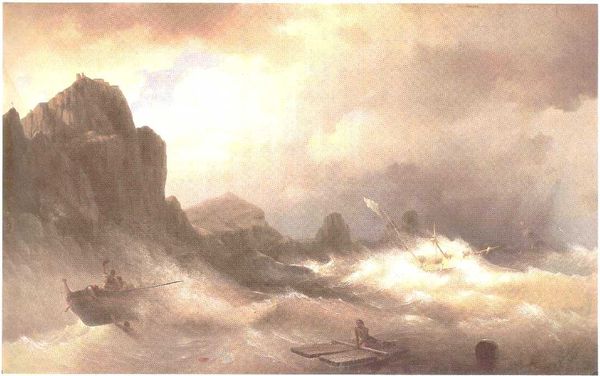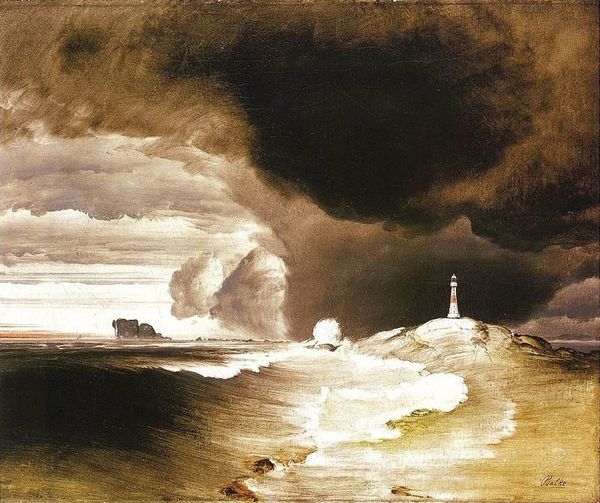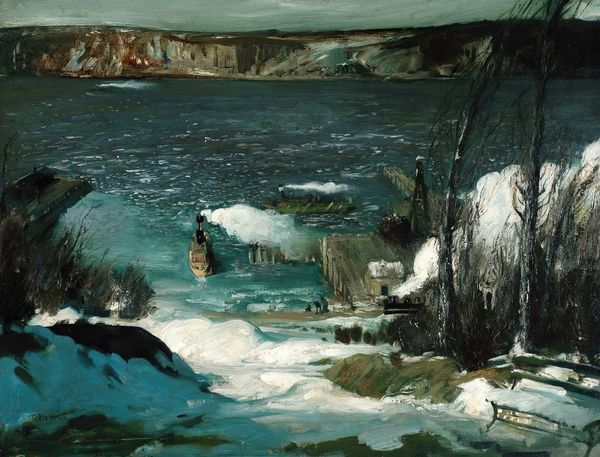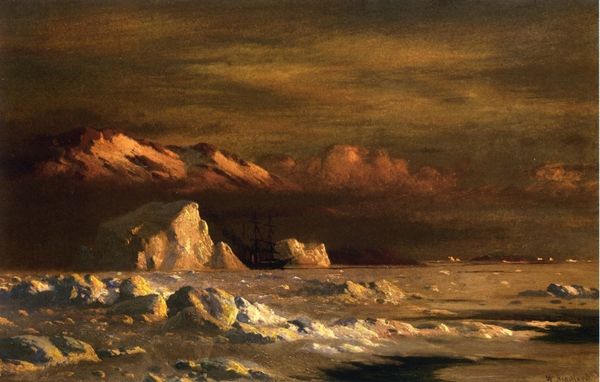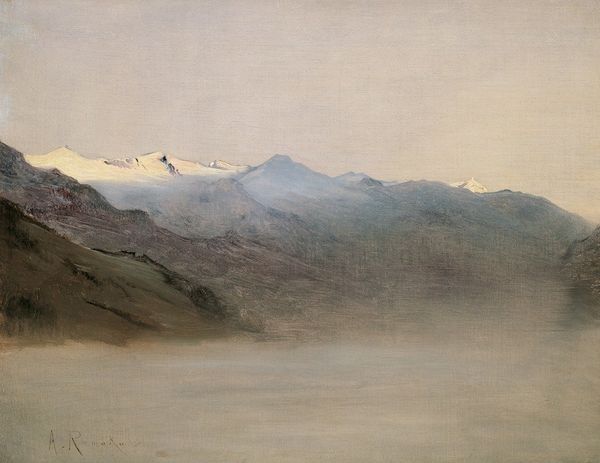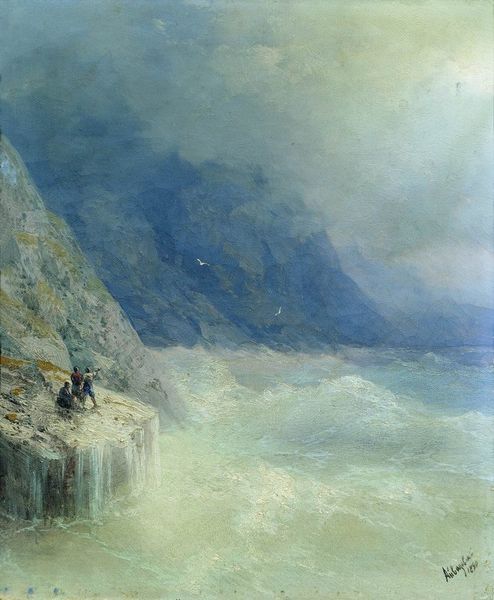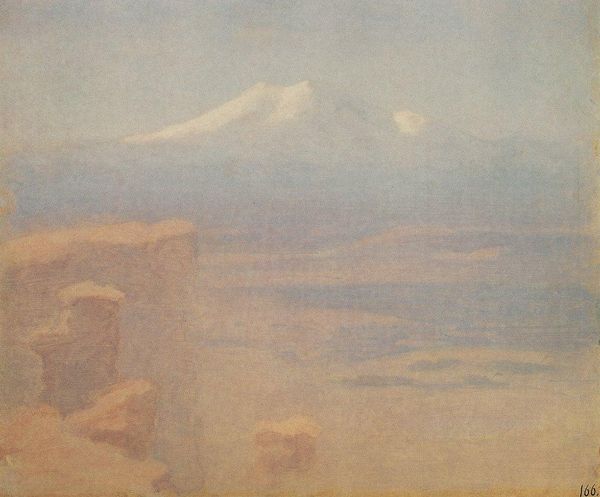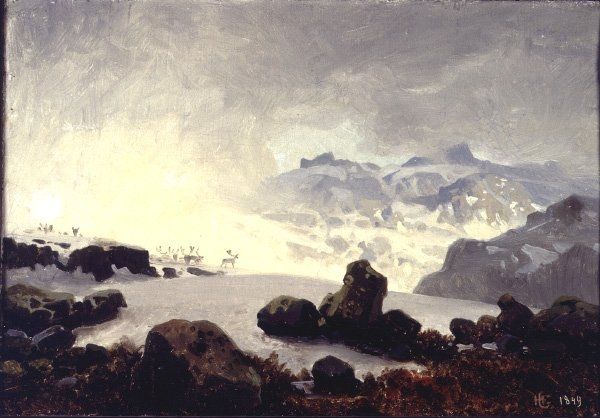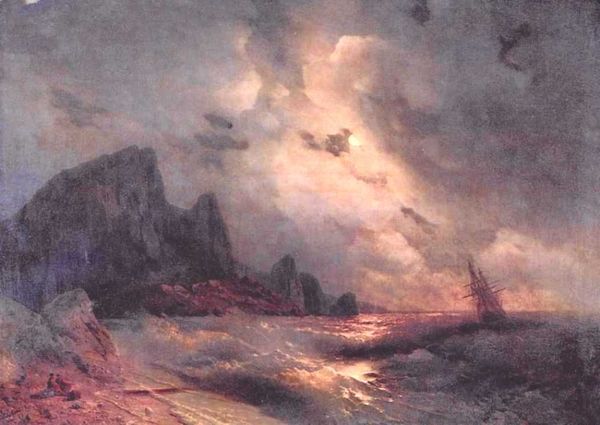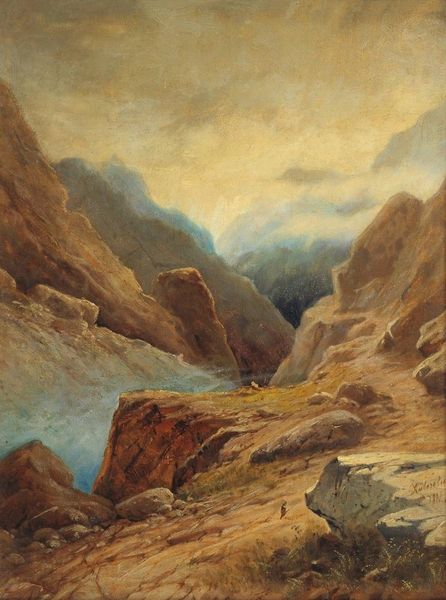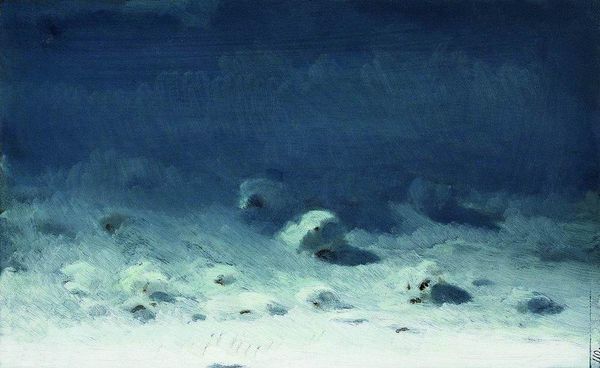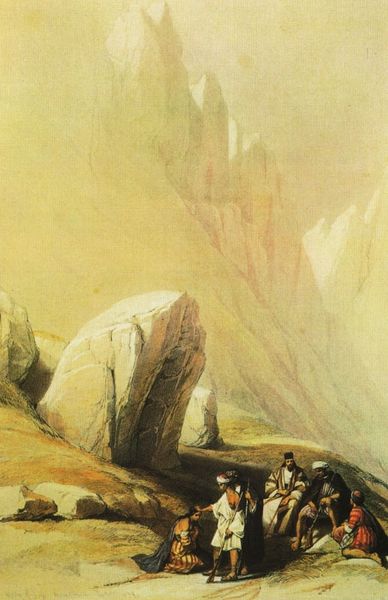
Dimensions: 78 x 57 cm
Copyright: Public domain
Curator: Ivan Aivazovsky’s “Ice Breakers on the Frozen Neva in St. Petersburg,” painted in 1877, offers a striking depiction of a winter scene. Editor: My immediate impression is the stark contrast between the weighty ice blocks and the delicate, almost watercolor-like sky. There’s a quiet sense of melancholy, amplified by the subdued palette. Curator: Aivazovsky, known primarily for his seascapes, captures the Neva River completely transformed. Considering the socio-political climate of Russia in the late 19th century, we can appreciate this work as part of the larger Realist movement which sought to represent life authentically. This reflects the working-class struggle present at this time in Russia, Editor: And beyond just 'authenticity,' I think there's an intentional focus on the laborers. These men working to break the ice aren’t romanticized figures; they’re anonymous, bundled up against the cold, performing this essential yet brutal task. I feel a connection to the quiet desperation of keeping industry and trade moving despite harsh circumstances. Curator: The muted colors also emphasize this, they are dominated by whites, greys and browns. He used these colors to create the wintry atmospheric mood and a stark environment. This isn't just a depiction of winter, it’s about the harsh reality of working-class life. We need to be mindful when observing art that is from another space and time; especially when observing pieces centered around manual labor. The art market today might exploit these issues more than present real representation. Editor: Exactly. The scale, too, feels significant. The sky dwarfs the figures, and even the buildings in the background seem distant and indistinct. It’s as though nature and the elements, and by extension the upper class of Russia at the time, overshadows humanity itself. I see Aivazovsky here echoing some of the sociopolitical sentiment growing at this time. Curator: It invites questions about class and labor. The men breaking ice facilitated commerce and movement for others in St. Petersburg. What price did these men, and those who supported them, pay for the societal elite? A painting initially depicting "winter" is actually much more multi-layered. Editor: Absolutely. The longer I look, the more layers I see within that deceptively simple landscape. It really highlights art’s power to reflect societal conditions, beyond aesthetics.
Comments
No comments
Be the first to comment and join the conversation on the ultimate creative platform.
